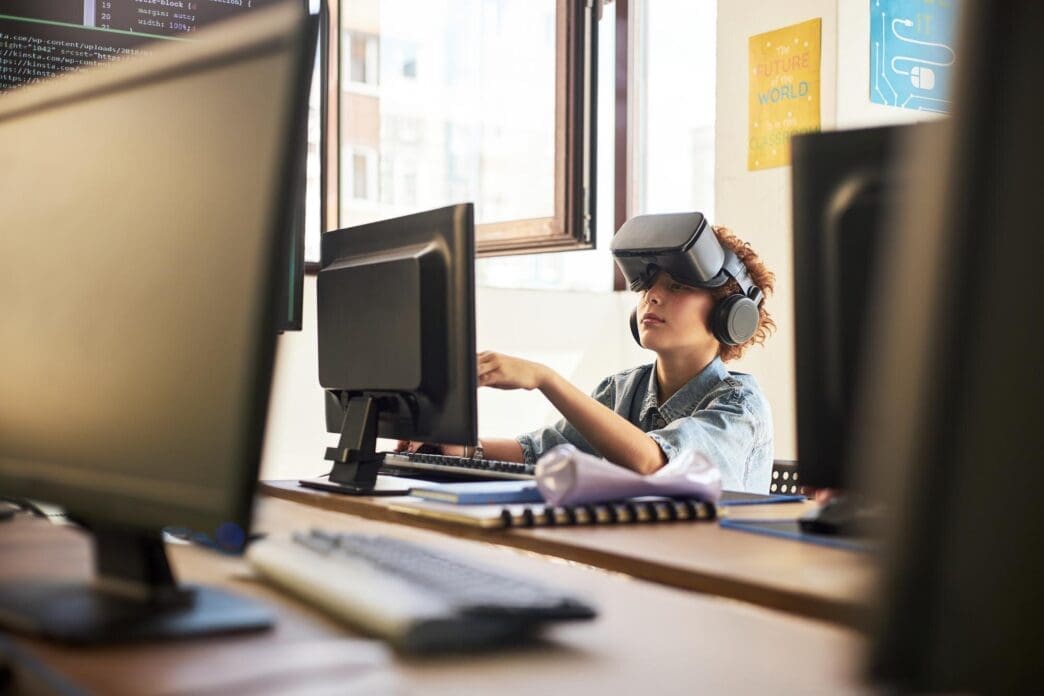A Quick Takeaway
The Story Behind the Trend
How to Make It Work for You
The Community View
As digital screens increasingly dominate our daily lives, a significant concern for visual well-being has emerged, prompting medical experts, including ophthalmologists across Florida, to outline essential strategies for mitigating digital eye strain. This pervasive condition, affecting millions who spend prolonged periods in front of computers, smartphones, and tablets, manifests through a range of uncomfortable symptoms, but fortunately, proactive measures can effectively shield your eyes from its adverse effects, ensuring long-term ocular health.
Understanding Digital Eye Strain
Digital eye strain, also known as computer vision syndrome (CVS), is a group of eye and vision-related problems that result from prolonged computer, tablet, e-reader, and cell phone use. It is not a single problem but a wide range of symptoms that can cause significant discomfort and impact productivity. The prevalence of this condition has surged alongside the ubiquitous adoption of digital devices in both professional and personal settings.
Common symptoms of digital eye strain include blurred vision, dry eyes, irritation, redness, and a feeling of grittiness. Many individuals also experience headaches, neck pain, and shoulder pain, which are often secondary to poor posture adopted while using digital devices. These symptoms can collectively reduce comfort and efficiency during screen time, making daily tasks more challenging.
The Science Behind the Strain
Several factors contribute to the development of digital eye strain. One primary culprit is the reduced blink rate that occurs when concentrating on a screen. Typically, we blink about 15-20 times per minute, but this rate can drop by 50% or more during intense screen use, leading to dry eyes and irritation. The prolonged focus required to read text on a screen, often at a fixed distance, also puts extra demand on the eye muscles, leading to fatigue.
Furthermore, digital screens emit blue light, a high-energy visible light that can penetrate deep into the eye. While the long-term effects of blue light exposure on retinal health are still under extensive research, excessive exposure, especially in the evening, can disrupt the body’s natural sleep-wake cycle. Glare from screens and improper lighting in the surrounding environment also force the eyes to work harder, exacerbating strain and discomfort.
Expert Strategies for Eye Protection
Florida-based eye care professionals emphasize that adopting specific habits and optimizing your environment can significantly alleviate and prevent digital eye strain. These strategies focus on reducing ocular stress and promoting healthier viewing practices.
The 20-20-20 Rule
One of the most widely recommended and simplest interventions is the 20-20-20 rule. Every 20 minutes, take a 20-second break to look at something 20 feet away. This brief pause allows your eye muscles to relax and refocus, reducing the sustained strain of near-distance viewing. Setting a timer or using a simple app can serve as a helpful reminder to consistently follow this rule throughout your day.
Optimize Your Workspace
Proper ergonomics play a crucial role in preventing eye strain and associated physical discomfort. Position your screen approximately an arm’s length (20-28 inches) away from your eyes, with the top of the monitor at or just below eye level. This setup promotes a comfortable viewing angle and helps maintain good posture, preventing neck and shoulder pain.
Minimize glare by adjusting lighting in your workspace. Avoid direct light sources, such as windows or overhead lights, reflecting off your screen. Consider using anti-glare screen filters or dimming ambient lighting to reduce reflections. A comfortable, supportive chair that encourages good posture is also essential for overall comfort during extended screen time.
Adjust Screen Settings
Customizing your device’s display settings can significantly reduce eye fatigue. Adjust the brightness of your screen to match the ambient light in your room, avoiding overly bright or dim displays. Increase the text size to a comfortable level that prevents squinting, and consider increasing the contrast for better readability.
Many devices offer “night mode” or “warm light” settings, which shift the screen’s color temperature towards the warmer end of the spectrum, reducing blue light emission. Activating these features, especially in the evening, can lessen eye strain and potentially improve sleep quality by minimizing melatonin suppression.
Prioritize Regular Blinking
Conscious blinking is a simple yet effective way to combat dry eyes, a common symptom of digital eye strain. Make a deliberate effort to blink fully and frequently, ensuring your entire eye surface is moistened. If dry eyes persist, over-the-counter artificial tears can provide temporary relief and lubrication.
Consider Protective Eyewear
For some individuals, specialized eyewear can offer additional comfort. Blue light blocking glasses, which filter a portion of the blue light emitted by screens, are gaining popularity. While research on their long-term efficacy in preventing eye disease is ongoing, many users report reduced eye strain and improved sleep when wearing them, particularly during evening screen use.
If you already wear prescription glasses, discuss with your ophthalmologist whether an anti-reflective coating or a specific lens design for computer use would be beneficial. These specialized lenses can reduce glare and optimize focus for the intermediate distance required for screen viewing.
Maintain Overall Eye Health
Beyond screen-specific adjustments, general eye health practices are paramount. Ensure adequate hydration by drinking plenty of water throughout the day, as this supports overall bodily functions, including tear production. A diet rich in omega-3 fatty acids, vitamins A, C, and E, and zinc can also contribute to robust eye health.
Regular comprehensive eye examinations are crucial for detecting and addressing underlying vision problems that could exacerbate digital eye strain. Your eye care professional can assess your visual acuity, check for refractive errors, and screen for any other conditions that might affect your comfort during screen use.
When to Seek Professional Guidance
While these strategies are highly effective for managing typical digital eye strain, it is important to know when to consult an eye care professional. If you experience persistent or worsening symptoms, such as severe eye pain, sudden changes in vision, flashes of light, or double vision, seek immediate medical attention. These symptoms could indicate a more serious underlying condition that requires professional diagnosis and treatment.
By proactively integrating these expert-recommended practices into your daily routine, you can significantly reduce the discomfort and potential long-term effects of digital eye strain. Prioritizing your eye health in our increasingly digital world is not merely about comfort but about preserving one of your most vital senses for years to come.








